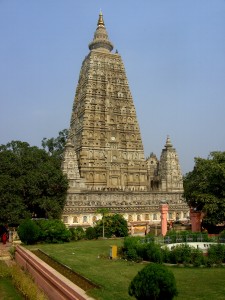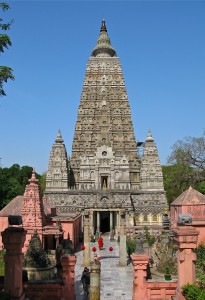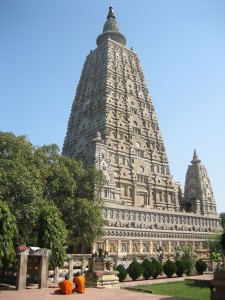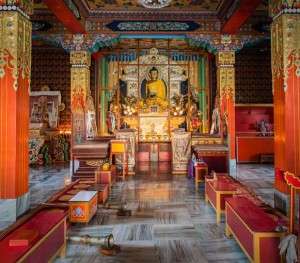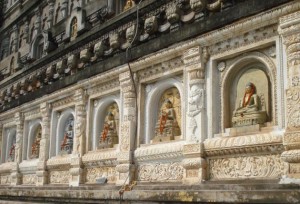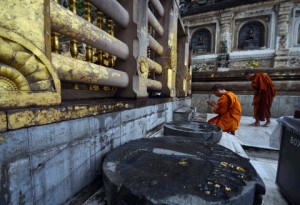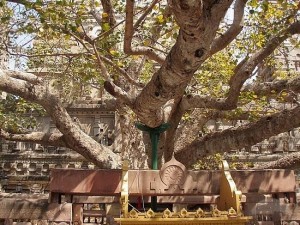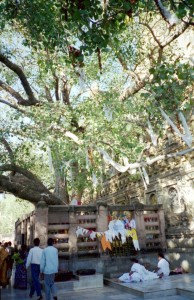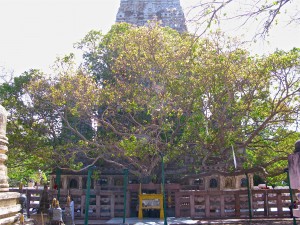Written by Soudip
April 29th 2014Other Places
You Are Here
Home > India > Shaniwar Wada, Pune Historical Facts and PicturesMahabodhi Temple (Bodh Gaya) Historical Facts and Pictures
The Mahabodhi Temple (the Temple of Great Awakening), located in Bodh Gaya in Gaya district, 96 km away from Patna in Bihar, India, is a notable Buddhist temple and a UNESCO World Heritage Site. The great temple, in addition to being a notable architectural monument, marks the place where Siddhartha Gautama (later to be known as the Buddha) attained Enlightenment. The sacred fig tree (Bodhi tree) under which Siddhartha Gautama is believed to have meditated for years before achieving Enlightenment, is located in the west of the main temple. The Pali Canon (Buddhist religious scriptures) mentions the site as Bodhimanda while the temple or monastery is mentioned as the Bodhimanda Vihara.
The credit for building the Mahabodhi temple is often attributed to the Indian Emperor Asoka, who visited Bodh Gaya in 250 BCE, (200 years after Siddhartha Gautama attained Enlightenment) to mark the holy site by establishing a shrine and monastery. However, the structures and architecture of the Mahabodhi Temple are dated back only to the 5th-6th century. Many historians believe most of the current structure to be the result of a nineteenth-century restoration work by the British Archaeological Survey of India on the fifth-century temple located at the site. Prior to that, a pyramidal structure is believed to have been located there, built in around the 2nd century, during the Kusana period.
Mahabodhi Temple
Mahabodhi Temple Inside
Mahabodhi Temple Bodhi Tree
The Mahabodhi Temple is one of earliest Buddhist brick temples from the later periods of the Gupta Dynasty to still exist in India. The tallest tower of the Mahabodhi temple is 180 feet high while its main Vault has been coated with 290 kg of gold plates by the Government of Thailand.
Category
IndiaWritten by Soudip
April 29th 2014










